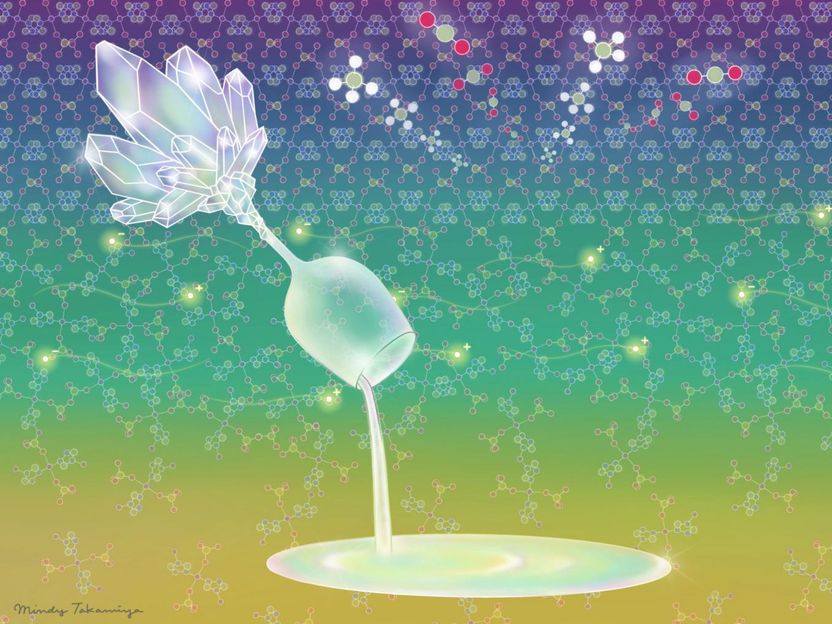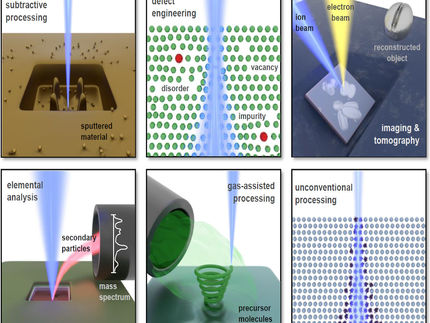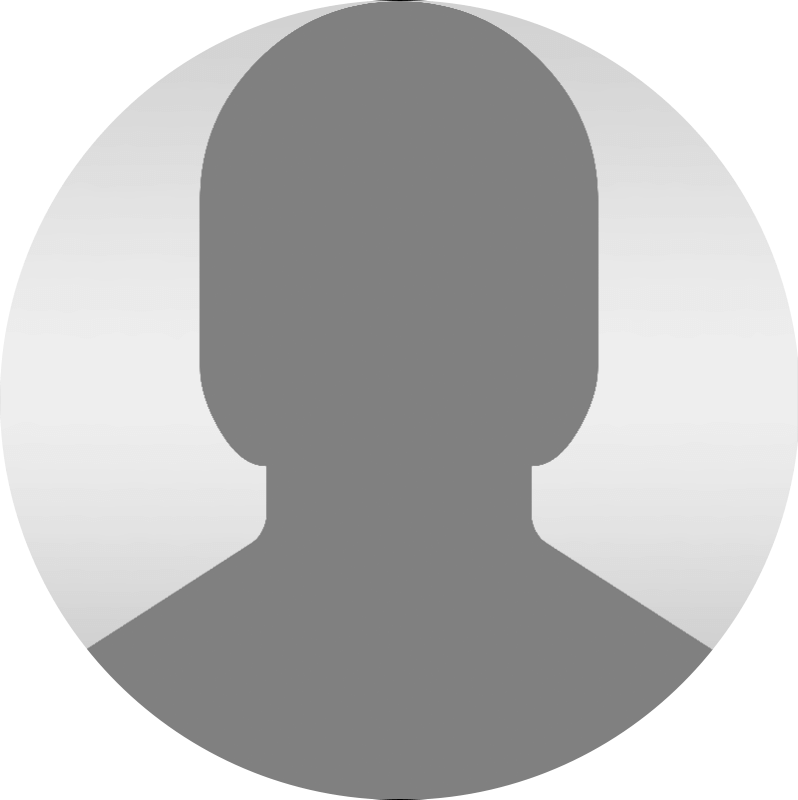New state-of-the-MOF materials
Towards Functional Glasses and Liquids
Metal-organic frameworks (MOFs) are porous, crystalline materials that can trap compounds within their molecular cavities, giving them a wide range of applications in gas storage and separation, carbon capture, and in the catalysis of chemical reactions, to name a few. A new range of applications are now being investigated by converting crystalline MOFs into liquid and/or glassy states.

The novel DNA-binding molecule combines multiple tools into a single synthetic platform, like a chemical Swiss knife.
Illustration by Mindy Takamiya (CC BY 4.0)
"MOFs are a relatively new class of material, and most of those developed in the last 20 years are in the crystalline state," says Satoshi Horike, a materials scientist of Kyoto University's Institute for Integrated Cell-Material Sciences (iCeMS). "Recently, we have found non-crystalline glass or liquid states in MOFs and propose they have great potential as future materials."
Horike reviewed the latest advancements and perspectives in the field, together with material chemist Susumu Kitagawa and colleagues for the journal Angewandte Chemie International Edition.
Tens of thousands of MOFs have been synthesized since they were first discovered in the late 1990s. Technology advances are now allowing researchers to uncover what happens at the molecular level when some MOFs are heated to a melting point and then cooled to produce a glass-like state. So far, researchers have reported about ten MOFs that can be melted into a liquid and/or turned into a glass state. Their melting temperatures range from 184°C to 593°C, depending on their crystal structures.
When this type of MOF is heated, its metal ions and organic ligands start to wobble within the crystals as the material melts. The bond distances in its polymer chains also lengthen as temperatures continue to rise. The structure of a MOF's crystalline state is very ordered. The glass state has a 'middle-range order', where the connections break but portions of the extended structure remain generally in place. Much more molecular fragmentation occurs when a MOF reaches the liquid state, but some of its internal structure retains an element of connectivity.
Not all of these MOFs can be transformed into glass by cooling their liquid state. Some require a mechanical grinding-like treatment for glass to form. During this process, adding certain chemicals to the material could modulate some of its physical properties, such as enhancement of proton conductivity.
Liquid and glass MOFs could provide a new state of material that demonstrates porosity, ion conductivity, and optical properties such as luminescence. They also show promise for heat storage, in energy devices, and for gas permeation. Hybrid materials incorporating glass or liquid MOFs with other materials, such as organic polymers, metal particles, or metal ions, could be used as strong adhesives in energy devices or in catalytic reactions.
The researchers suggest that scientists should revisit the huge library available for crystalline MOFs from the viewpoint of phase change to liquid and/or glass. Doing so could lead to the design of new functional materials.
Original publication
Other news from the department science

Get the chemical industry in your inbox
By submitting this form you agree that LUMITOS AG will send you the newsletter(s) selected above by email. Your data will not be passed on to third parties. Your data will be stored and processed in accordance with our data protection regulations. LUMITOS may contact you by email for the purpose of advertising or market and opinion surveys. You can revoke your consent at any time without giving reasons to LUMITOS AG, Ernst-Augustin-Str. 2, 12489 Berlin, Germany or by e-mail at revoke@lumitos.com with effect for the future. In addition, each email contains a link to unsubscribe from the corresponding newsletter.





























































